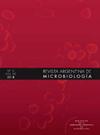Prospective evaluation of Leptospira spp. infection in goats maintained in field conditions in the Caatinga biome, Brazil
IF 2.1
4区 生物学
Q4 MICROBIOLOGY
引用次数: 0
Abstract
The Caatinga biome occurs only in Brazil; however, there is no survey on leptospirosis using direct and indirect diagnostic tests in this region with goats maintained in field conditions. We conducted a prospective survey with paired sampling to evaluate the importance of carrier goats in the maintenance of disease. Based on sampling calculation, 60 goats (30 confined and 30 extensively reared) were randomly selected and monitored for three months during the rainy season with paired monthly biological sample collections. The animals underwent urine and vaginal fluid collection for microbiological and molecular diagnosis, and serum samples for serological diagnosis using the microscopic agglutination test (MAT). Overall, 45 (75%) animals were positive in at least one diagnostic method. Anti-Leptospira spp. antibodies were detected in all three sampling moments in 43 (71.7%) animals, antibody titers varied from 25 to 800, and most frequent serogroups were Australis in the 1st and 2nd blood collections (66.7% and 40.7%, respectively) and Cynopteri in the 3rd collection (52.6%). None of the animals tested positive in the microbiological diagnosis or the vaginal fluid PCR; however, five (16.7%) animals were positive in the urine PCR only in the confined group in the first collection. Two DNA urine samples were sequenced, demonstrating 99% similarity with Leptospira interrogans. Different diagnostic techniques for leptospirosis in goats raised under Caatinga biome field conditions are suggested, as well as further studies over a longer period with monthly collections to better understand the prevalence of Leptospira spp. and its variation over time.
巴西Caatinga生物群系野外条件下山羊钩端螺旋体感染的前瞻性评价。
卡廷加生物群系只存在于巴西;然而,对该地区在田间条件下饲养的山羊,没有使用直接和间接诊断试验对钩端螺旋体病进行调查。我们进行了一项前瞻性调查,采用配对抽样来评估载体山羊在疾病维持中的重要性。在抽样计算的基础上,随机选择60只山羊(30只圈养,30只放养),在雨季监测3个月,每月配对采集生物样本。收集动物尿液和阴道液用于微生物学和分子诊断,并收集血清样本用于显微镜凝集试验(MAT)的血清学诊断。总体而言,45只(75%)动物在至少一种诊断方法中呈阳性。43只(71.7%)动物在3个采样时刻均检测到钩端螺旋体抗体,抗体滴度在25 ~ 800之间,以第1次和第2次采集的Australis(分别为66.7%和40.7%)和第3次采集的Cynopteri(分别为52.6%)血清群最多。没有动物在微生物诊断或阴道液PCR检测中呈阳性;然而,在第一次采集中,只有密闭组的5只(16.7%)动物尿液PCR阳性。两份尿样DNA测序显示与钩端螺旋体有99%的相似性。建议在Caatinga生物群系野外条件下饲养的山羊中采用不同的钩端螺旋体病诊断技术,并建议在较长时间内进行每月采集的进一步研究,以更好地了解钩端螺旋体的流行情况及其随时间的变化。
本文章由计算机程序翻译,如有差异,请以英文原文为准。
求助全文
约1分钟内获得全文
求助全文
来源期刊

Revista Argentina de microbiologia
MICROBIOLOGY-
CiteScore
3.30
自引率
0.00%
发文量
46
审稿时长
>12 weeks
期刊介绍:
La Revista Argentina de Microbiología es una publicación trimestral editada por la Asociación Argentina de Microbiología y destinada a la difusión de trabajos científicos en las distintas áreas de la Microbiología. La Asociación Argentina de Microbiología se reserva los derechos de propiedad y reproducción del material aceptado y publicado.
 求助内容:
求助内容: 应助结果提醒方式:
应助结果提醒方式:


